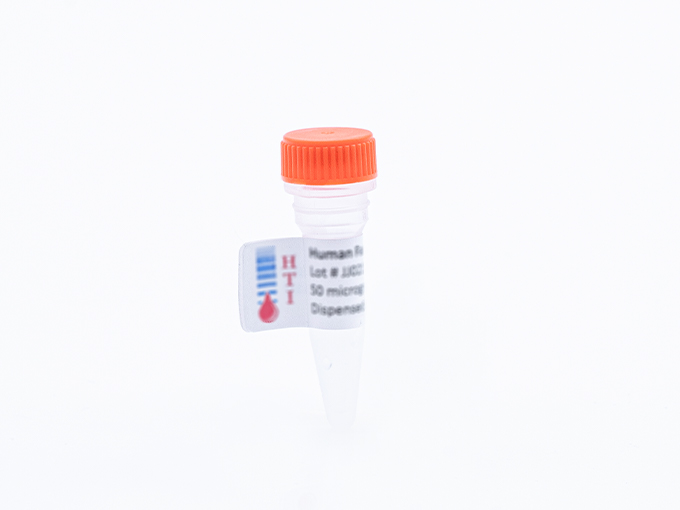Description
Platelet factor-4 (PF-4) is a low molecular weight, heparin-binding protein which is secreted from agonist-activated platelets (1,2). PF-4 is localized within the platelet �-granule (2) where its concentration ranges from 11.2-12.4 µg per 109 platelets making it, on a molar basis, one of the most abundant proteins in the platelet (1,2). Since the relative concentration of PF-4 in platelets exceeds that of plasma by 280,000-fold (3), PF-4 levels in plasma have been utilized as a measure of platelet activation in vivo. PF-4 is secreted from platelets in complex with a high molecular weight, proteoglycan, carrier protein (4,5). Sedimentation equilibrium experiments have shown that in the absence of its proteoglycan carrier, the molecular weight of PF-4 is 27,000-29,000 (4,5). Subsequent amino acid sequencing of PF-4 revealed a molecular weight of 7,800 (6-8) indicating that native PF-4 is a homotetramer. Functionally, PF-4 neutralizes the anticoagulant activity of heparin in plasma. The heparin binding site within PF-4 is presumably located within the lysine-rich, COOH-terminal region of the molecule (6-8). Since soluble heparin is a therapeutic agent, the physiological significance of the anti-heparin activity of PF-4 is not known. However, by interacting with cell surface expressed heparin-like glycosaminoglycans on endothelial cells, PF-4 may exert its procoagulant effect (9,10). PF-4 binding to cell surface glycosaminoglycans may also be a mechanism through which PF-4 stimulates the release of histamine from basophils (11). The chemotactic activity of PF-4 toward neutrophils and monocytes (12) has also been localized to the COOH-terminal, presumed heparin-binding domain of PF-4 (13). While PF-4 is primarily a secreted protein, PF-4 binding sites on the platelet surface have been identified which may be important for platelet aggregation (14). Human PF-4 is prepared from the supernatant of thrombin-activated platelets by heparin-agarose affinity chromatography (15). The purified protein is supplied in 25 mM Hepes pH 7.4, 2 M NaCl and should be stored at -20°C. Purity is assessed by SDS-PAGE analysis and heparin-neutralizing activity is verified by clotting assay.

